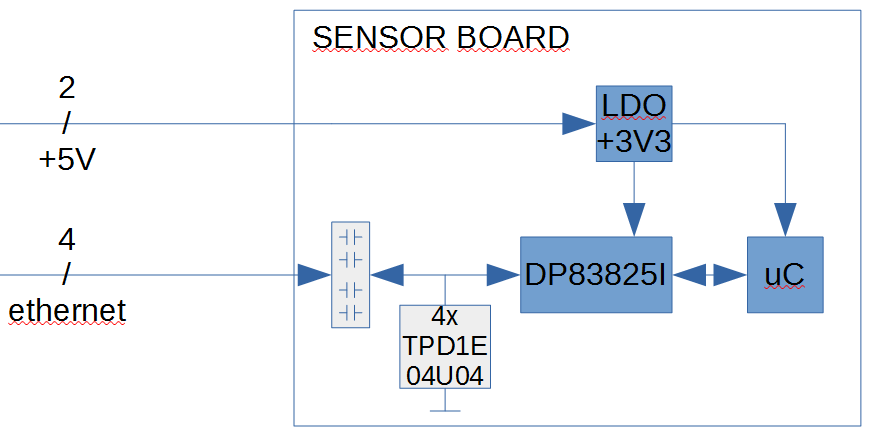Other Parts Discussed in Thread: TPD1E04U04, DP83825EVM, TPD4E05U06
Hi,
In previous posts I've read that DP83825I supports capacitive coupling.
What about hot insertion on a capacitive coupled already on system?
This is my story:
I've designed 2 embedded boards with capacitive coupled DP83825I Ethernet PHYs (no magnetics) powered at +3V3.
This boards have only one 6pole connector on board, with 4pins for Ethernet pairs and 2pins for power supply, and are connected together with a CAT5e cable.
In normal operations all is ok, the system works perfectly.
But after some hot insertion with the receiver board already on, the DP83825I on the off board broke easily.
I've tried with different boards with the same result.
Where is the problem? Do I have to protect phy in some way?




